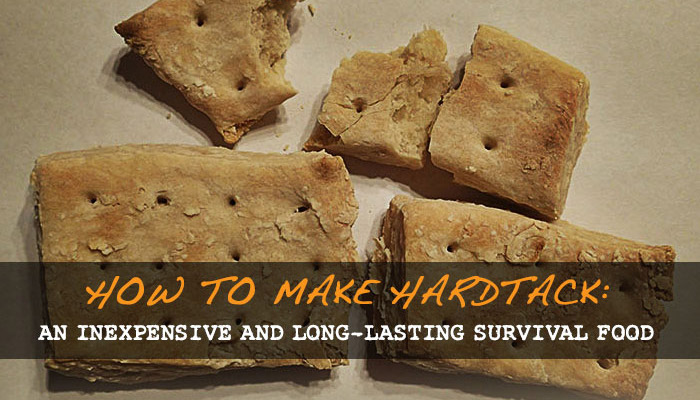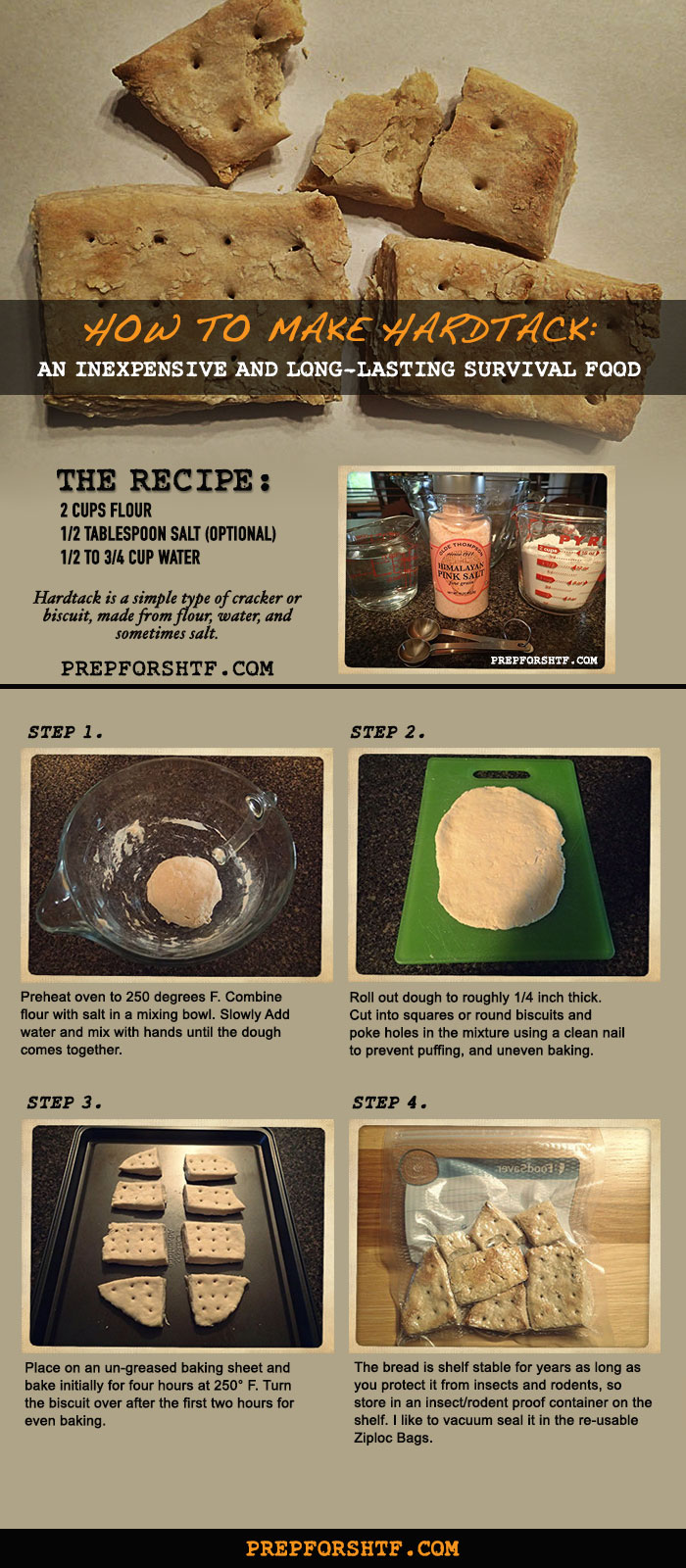Hardtack the History
Hardtack, or “hard tack” is a simple biscuit or cracker made from flour and water, and when salt was available to the makers it was added as well in years past. The recipe has been used for thousands of years. The Romans made hardtack as well as the Egyptians, and usually the flour and water cracker was issued to soldiers.
The biscuit, or cracker if you prefer, was and still is, used today for sustenance in the absence of perishable foods. The name hardtack is derived, according to historians, from British sailor’s slang for food, which is “tack”, and of course, because it is very hard it is referred to as hardtack.
Hardtack as we know it today has been called pilot bread, ship’s biscuit, sea biscuit, cabin bread, and sea bread. Hardtack became a staple for soldiers fighting in the American Civil War (Colleary, 2013).
Union Troops were rationed nine to 10 biscuits a day and often times they were used as plates for other foods and then consumed as they marched. The biscuit was usually baked twice and this was done up to six months before being issued to troops to ensure it was dried out properly.
Because of blockades in place, flour was in short supply in the Southern States, but when available, flour and water was made into hardtack for the Southern troops as well.
The bread for sea voyages was baked up to four times to ensure it lasted the long trips across the seas, and once cured the cracker lasted for years if it was kept dry. In fact, it was so hard it usually had to be soaked in liquid before eating. Pickle brine, coffee, and even water were used to soften it enough to eat.
There are actual hardtack rations that were issued to troops on display in some Civil War museums that are over 150 years old and still stable by all accounts.
Making Hardtack
Hardtack is an ideal survival ration, just flour, water, and salt if available. The recipe can be tweaked of course, but you have to keep in mind that the reason the cracker can last for years is lack of moisture.
The moisture is literally baked out of the biscuit. Typically it is baked twice, and again, you can adapt this to suit the situation. You may not need the hardtack to last 150 years, so you can add honey or mix some additional grains or spices in with the flour, again keeping moisture levels in mind.
The entire premise was to create a food that did not spoil and, could be carried by anyone under any circumstance and eaten as is, even months or years after the ration was issued.
To make, all you do is add water, a little at a time to flour, (start with 2 cups flour) and add just enough water to create dough, of course if you do add too much water just add more flour. You are not making bread so you would not knead the mixture. It just needs to be pliable enough to press out and cut into squares or circles or frankly whatever shape you want. Use a floured rolling pin to roll out the dough, roll to about 1/4 inch thickness. Preheat your oven to 250° F.
Cut all pieces to the same size so they cook evenly. The biscuits once done are not typically browned like bread or buttermilk biscuits. They should look more like a Saltine Cracker, for example.
Use a wooden rule as a guide for cutting by laying it across the dough as you cut into squares or use a biscuit cutter or a water glass to cut into a traditional biscuit shape. The typical ration size was a 3 inch x 3 inch square.
Once cut “dock” the pieces. Docking is putting holes in the squares to help them cook evenly and so they do not rise while baking. Use a fork, nail, chopsticks or any pointed object. A 3×3 ration square would have had 16 holes according to original recipes used during the Civil war.
Bake initially for four hours at 250° F. Turn the biscuit over after the first two hours for even baking, and once done cool on a rack. Because the biscuits are made from grain they can become infested with weevils so store in sealed pest proof containers.
Hardtack is still made today and it is the ideal survival food. It may lack taste, but it will keep you alive. The problem is that the biscuits will draw all the moisture from your mouth, so having an ample supply of water is important. You may very well have to soak the cracker in liquid or add pieces of it to stews or gravies to thicken or to add texture to other recipes.
They are very hard and difficult to chew. Break off a piece and let sit in your mouth until softened enough to chew and swallow, or dip/soak in coffee or water to soften.
Soldiers during the Civil War would fry salt pork and save the fat to fry hardtack in, which had been soaked in water.
Colleary, E. (2013). Retrieved 2015, from http://www.americantable.org/2013/06/civil-war-recipe-hardtack-1861/

